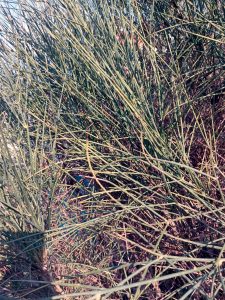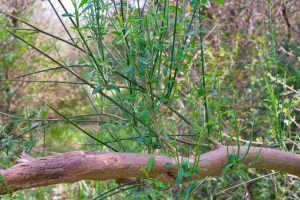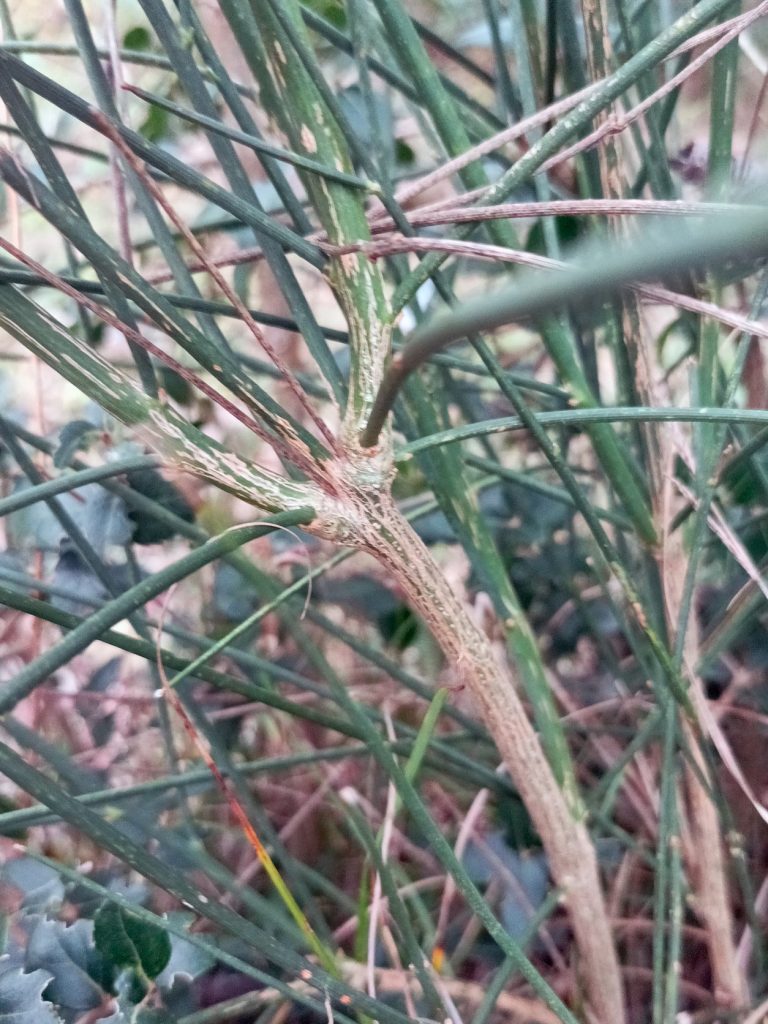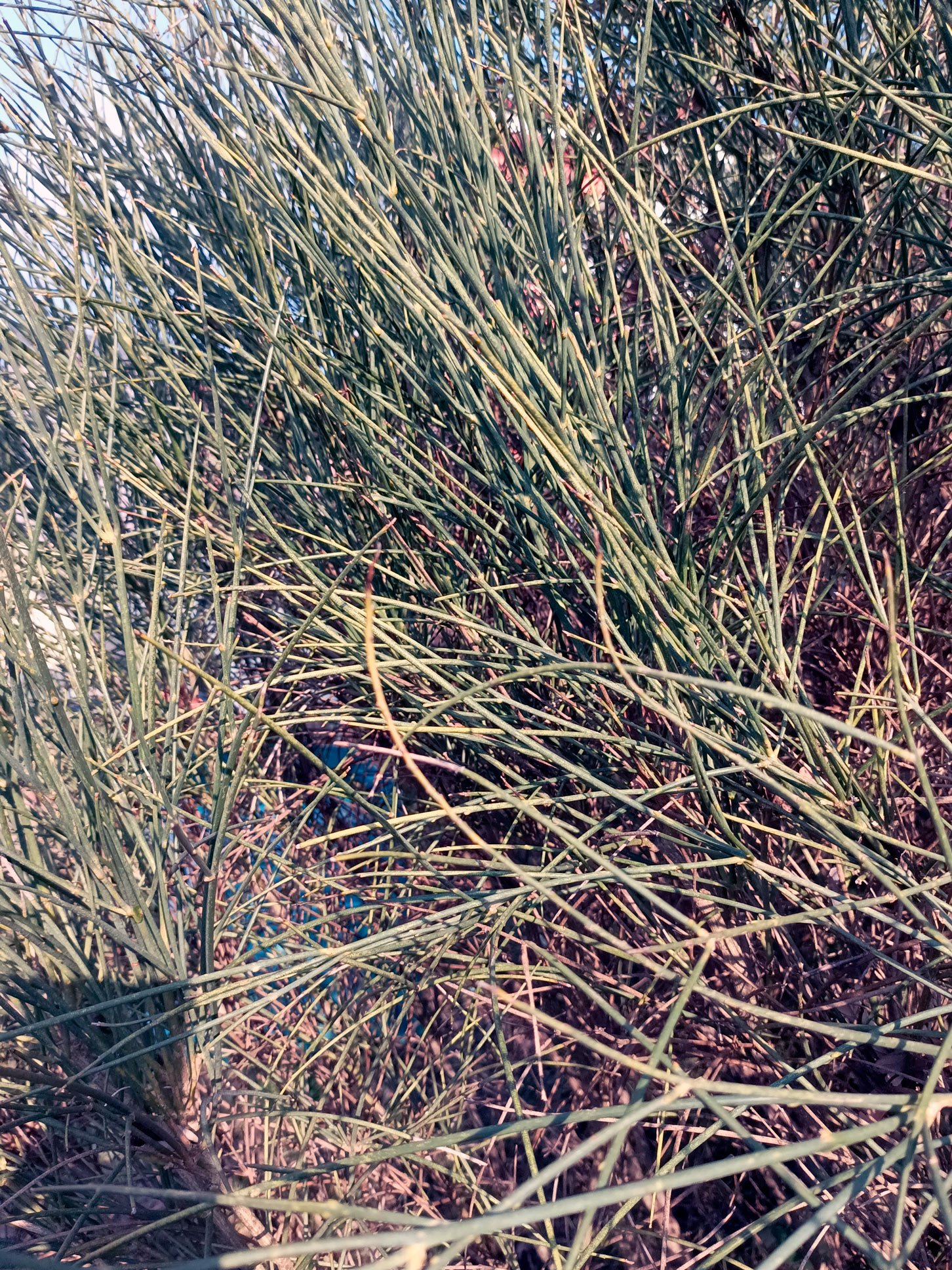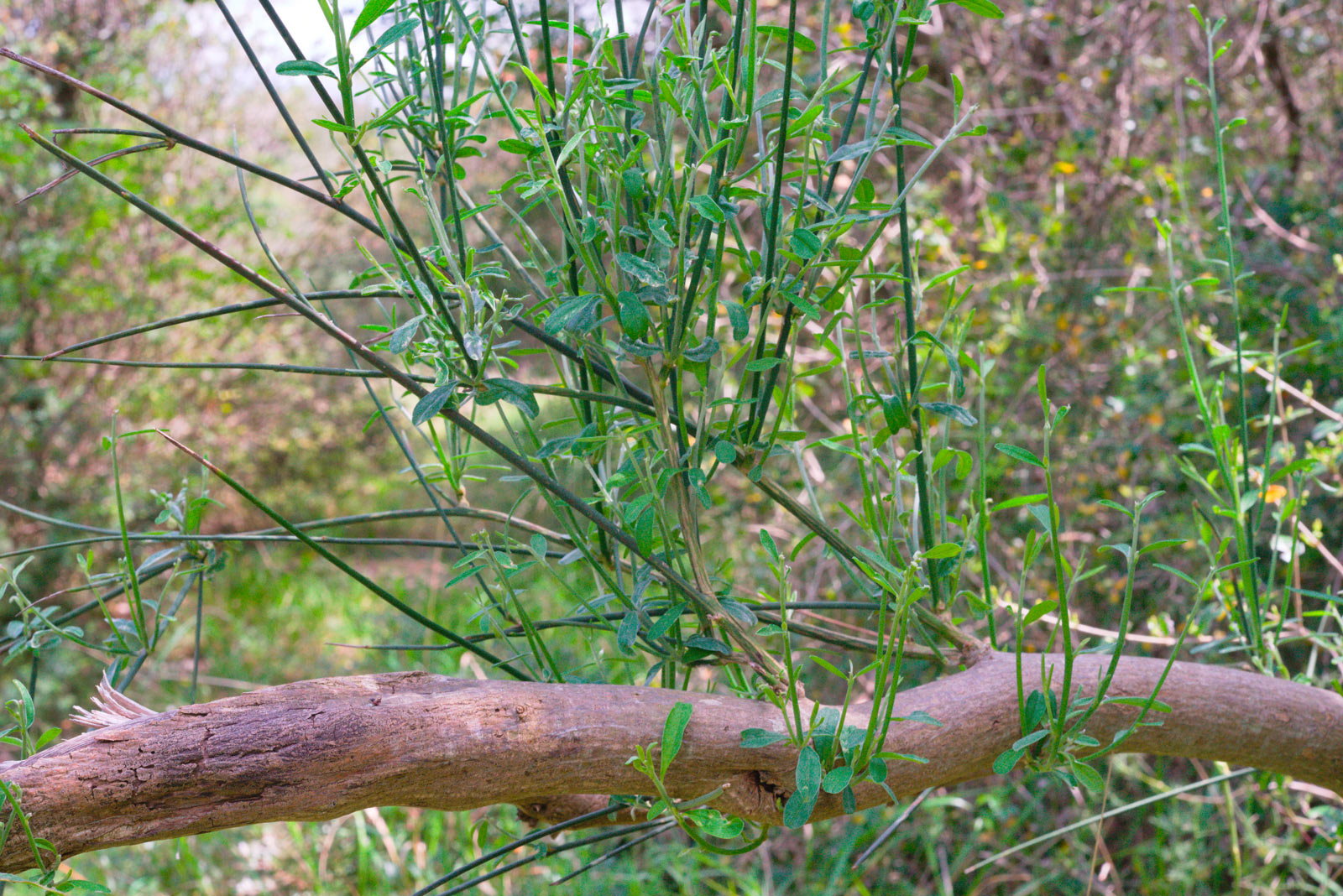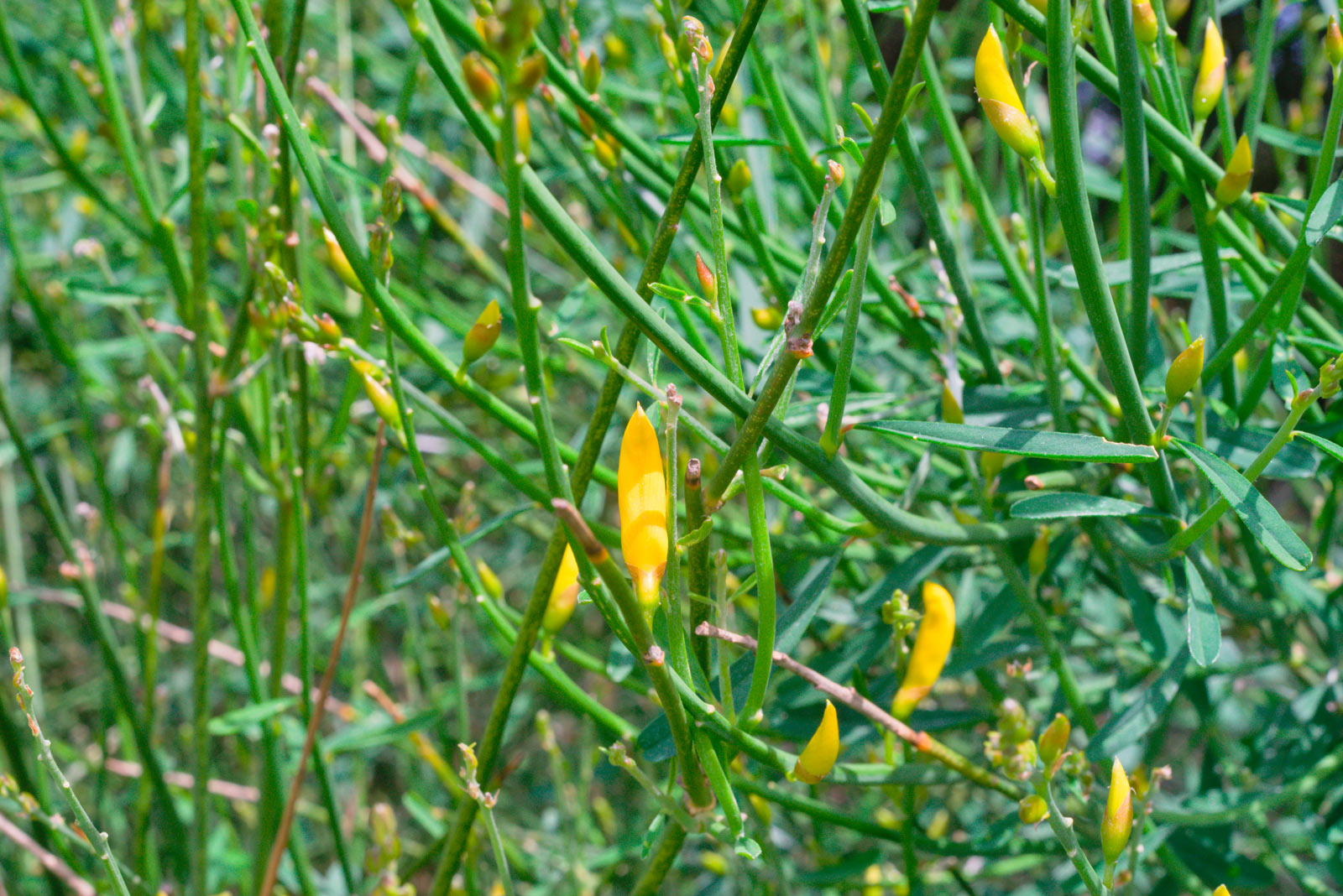Spanish Broom (Spartium junceum)
Spanish broom, or Spartium junceum, is a fast-growing, drought-resistant shrub native to the Mediterranean region. It typically reaches heights of 6 to 13 feet (2 to 4 meters), with long, slender, green stems that resemble rushes. The small, sparse leaves are deciduous in dry conditions, allowing the plant to conserve water. During late spring and summer, it produces clusters of bright yellow, pea-like flowers with a strong, sweet fragrance, attracting pollinators like bees and butterflies.
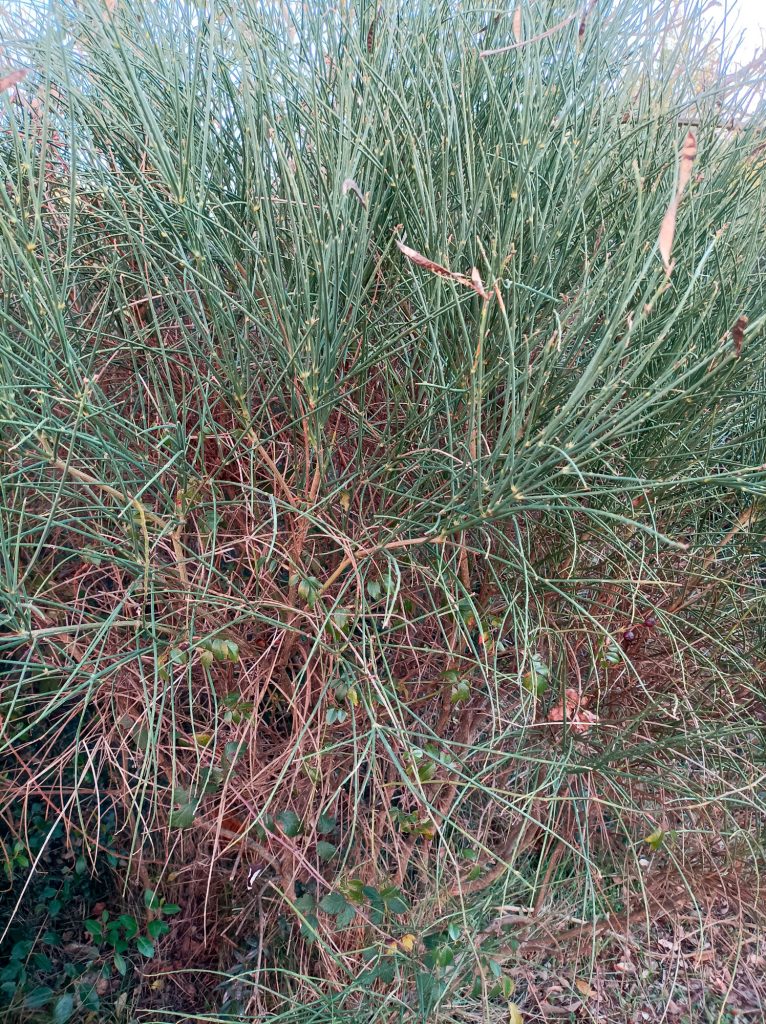
After flowering, Spanish broom develops elongated seed pods that turn brown as they mature, eventually splitting open to disperse seeds. This shrub thrives in poor, rocky, or sandy soils and tolerates full sun and drought, making it well-suited to arid landscapes. It grows rapidly, forming dense thickets that help prevent soil erosion. However, in some regions, it is considered invasive due to its ability to spread aggressively.
Often planted for erosion control, Spanish broom also serves as an ornamental shrub in Mediterranean-style gardens. Historically, its tough fibers were used for making ropes, mats, and textiles. While beautiful, it contains toxic compounds that can be harmful if ingested by humans or animals.
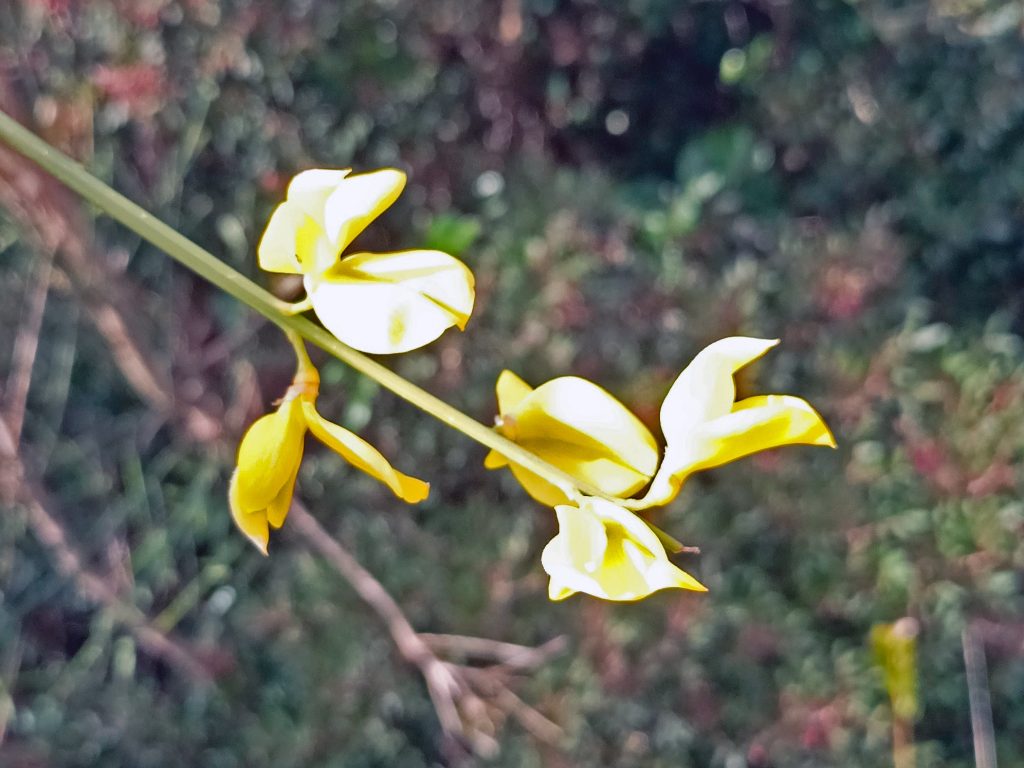
Scientific Classification of Spanish Broom
| Kingdom | Plantae |
| Clade | Angiosperms |
| Clade | Eudicots |
| Order | Fabales |
| Family | Fabaceae |
| Genus | Spartium |
| Scientific Name | Spartium junceum |
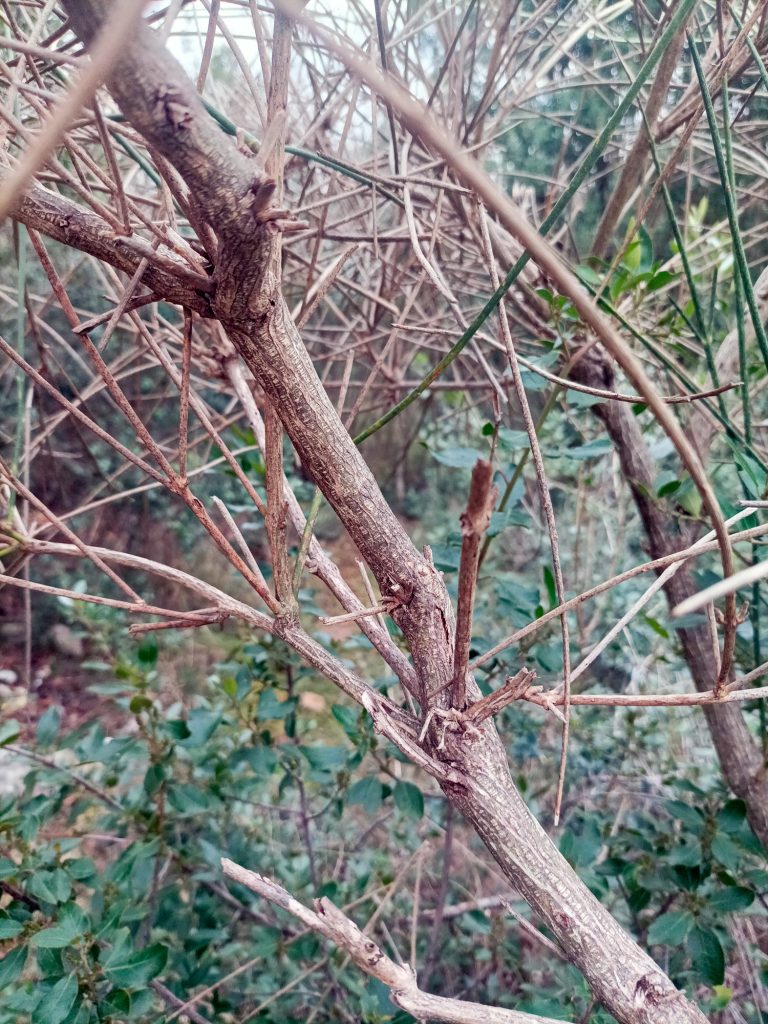
Quick Information
| Plant Type | Shrub |
| Identification | Height: 6 to 13 feet (2 to 4 meters) Leaves: Small, sparse, deciduous in drought Stem: Slender, rush-like, green Flowers: Bright yellow, pea-like, fragrant, blooming in late spring and summer Fruits: Brown seed pods that split open when mature Roots: Deep, aiding drought tolerance Growth Habit: Upright, bushy, fast-growing |
| Distribution | Native to the Mediterranean, naturalized in other regions with dry climates |
| Habitat | Rocky slopes, dry grasslands, roadsides, disturbed areas |
| USDA Hardiness Zone | Zones 7–10 |
| Growth Rate | Fast |
| Lifespan | Perennial |
| Growing Conditions | Sunlight: Full sun Soil: Poor, rocky, sandy, well-drained Water: Low, drought-tolerant |
| Drought Tolerance | High |
| Diseases | Generally disease-resistant, but can develop root rot in overly wet soils |
| Pests | Occasionally affected by aphids and scale insects |
| Reproductive System | Produces seeds in pods, spreads easily |
| Propagation | Seeds, cuttings |
| Wildlife Value | Attracts pollinators like bees and butterflies |
| Uses | Erosion control, ornamental, fiber production |
| IUCN Conservation Status | Not Evaluated |

